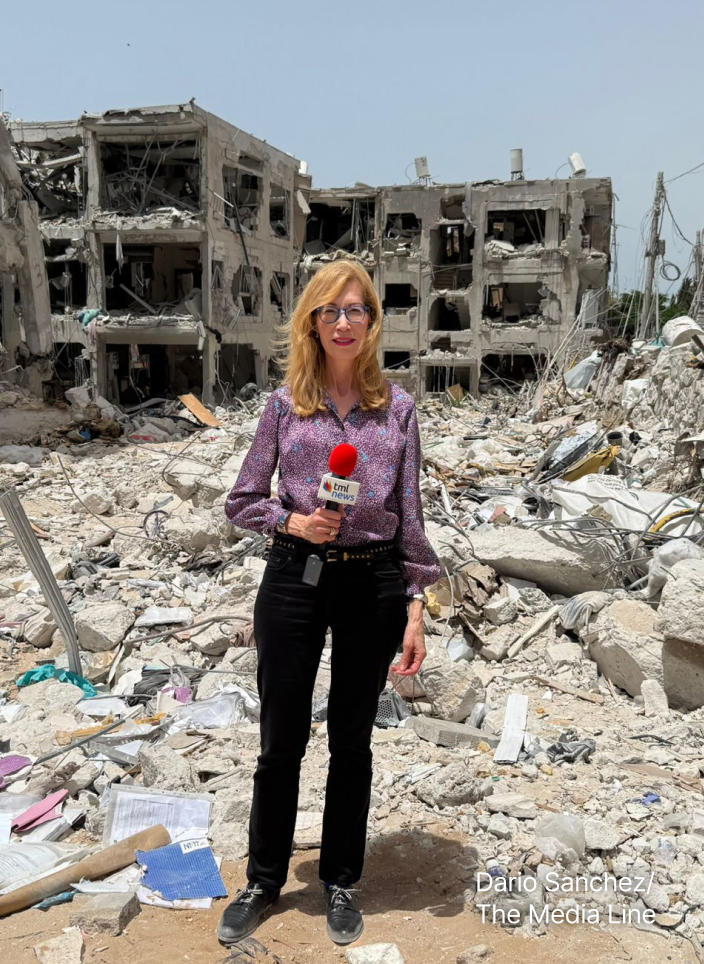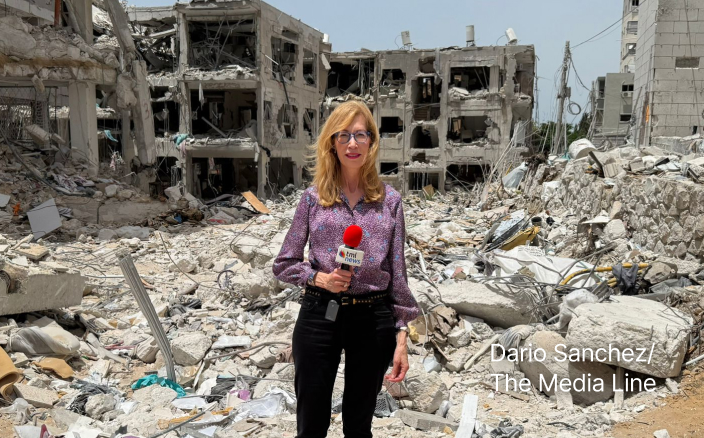Israel launched a massive airstrike on Iranian territory early Friday morning, targeting nuclear facilities, missile sites, and senior Iranian military leaders in what Israeli officials are calling Operation Rising Lion. The coordinated assault, which involved dozens of Israeli aircraft, marks the most direct confrontation yet between the two regional powers and is being framed by Israel as a last-ditch effort to prevent Iran from developing nuclear weapons.
The opening wave of strikes began at approximately 3 a.m. local time and triggered nationwide emergency alerts in Israel and retaliatory air defense deployments in Iran. Explosions were reported in several major Iranian cities, including Tehran, Isfahan, and Arak. Initial assessments suggest that Israel’s primary targets included command centers, air defense systems, and sites tied to Iran’s nuclear development and long-range missile programs.
Iranian state media confirmed that the country’s air defenses had been activated and that flights at Tehran’s Imam Khomeini International Airport were suspended. Civilian aircraft were cleared from Iranian skies, and multiple sources reported widespread fires and structural damage in the capital. Iranian television confirmed that Israeli strikes targeted the Islamic Revolutionary Guard Corps (IRGC) headquarters and killed top members of the military establishment.
Among those reported killed were Iranian Chief of Staff Mohammad Bagheri and IRGC commander-in-chief Hossein Salami. Both men were among the most senior figures in Iran’s security apparatus. Bagheri, who led the armed forces since 2016, was widely considered the architect of Iran’s ballistic missile program. His influence was bolstered by family ties to the regime—his brother was a celebrated commander during the Iran-Iraq War, which helped solidify Bagheri’s standing among Iran’s ruling elite.
Though nominally the country’s top military officer, Bagheri frequently clashed with the more powerful and independently run IRGC, which operates under a separate command structure reporting directly to Supreme Leader Ayatollah Ali Khamenei.
Salami, who joined the IRGC during the Iran-Iraq War, rose through the ranks to lead the powerful paramilitary organization. He oversaw a violent crackdown on nationwide protests in 2022 and was often the regime’s most strident voice against Israel. Just one day before the strike, Salami had warned that any Israeli attack would be met with “a harsher and more painful response than anything the region has ever known.”
Also confirmed dead were Maj. Gen. Gholam Ali Rashid, commander of the “Khatam al-Anbiya” military complex in Tehran, and two senior nuclear scientists: Dr. Fereydoon Abbasi, former head of Iran’s Atomic Energy Organization, and physicist Mohammad Mehdi Tehranchi. Iranian television reported that all were killed in the Israeli air raids on Tehran and that the IRGC command compound was among the targets hit.
In a televised address, Israeli Prime Minister Benjamin Netanyahu said, “Our objective is to hit Iran’s nuclear facilities and military capabilities until we remove the threat to us.” He added, “Iran is preparing to produce tens of thousands of ballistic missiles that could kill millions of Israelis even without nuclear warheads—but imagine if any of them carried nuclear weapons.”
Netanyahu said intelligence showed Iran was only months away from being able to manufacture a nuclear weapon. “Iran has enriched enough uranium for nine nuclear bombs and taken steps toward full weaponization,” he said. “These steps moved Iran dangerously close to achieving a nuclear weapon within a short amount of time.”
Give the gift of hope
We practice what we preach:
accurate, fearless journalism. But we can't do it alone.
- On the ground in Gaza, Syria, Israel, Egypt, Pakistan, and more
- Our program trained more than 100 journalists
- Calling out fake news and reporting real facts
- On the ground in Gaza, Syria, Israel, Egypt, Pakistan, and more
- Our program trained more than 100 journalists
- Calling out fake news and reporting real facts
Join us.
Support The Media Line. Save democracy.


Speaking emotionally, the prime minister warned that delay was no longer an option. “We cannot leave these threats to the next generation. Because if we don’t act now, there may not be a next generation. If we don’t act now, we may not be here at all,” he said. He concluded with a reference to the Holocaust: “‘Never Again’ is now. We have internalized the lessons of history. When an enemy says he intends to destroy you, believe him. When the enemy develops the capabilities to destroy you, stop him.”
The Israeli Defense Forces (IDF) confirmed the operation, stating it was intended to prevent Iran from acquiring nuclear weapons. “Weapons of mass destruction in the hands of the Iranian regime are an existential threat to the State of Israel and to the wider world,” the IDF said in a statement. An Israeli security official added that the operation targeted not only nuclear sites but also the individuals and infrastructure supporting Iran’s nuclear and missile programs.
Brig. Gen. Effie Defrin, the IDF’s chief spokesman, said: “Today, Iran is closer than ever to obtaining a nuclear weapon. The State of Israel has the obligation to act in defense of its citizens and will continue to do so everywhere it is required, as we have done in the past.”
Defense Minister Israel Katz declared a “special emergency” across Israel and warned of an imminent Iranian missile and drone attack. He described the Israeli action as a “pre-emptive strike” and emphasized the need for citizens to comply with Home Front Command guidelines. Under the new directives, schools were shut, large gatherings were banned, and only essential workplaces remained open.
The IDF expects the operation to continue for several days. “We are in the window of strategic opportunities,” said one senior military official. “We have reached the point of no return, and there is no choice but to act now.”
While Israeli officials emphasized that the mission was not aimed at regime change, the high-level decapitation of Iran’s military leadership suggests a broader objective of dismantling Iran’s strategic capabilities. The targeted killing of Bagheri and Salami represents one of the most significant blows to Iran’s military command structure in decades.
Iranian jets were scrambled to intercept Israeli aircraft, and residents of Tehran reported seeing aerial combat and explosions near eastern military facilities. Witnesses described large fires and plumes of smoke rising from strike zones across the capital.
In Washington, US officials reiterated that the United States had no role in the operation. Secretary of State Marco Rubio said: “Israel took unilateral action against Iran. We are not involved in strikes against Iran and our top priority is protecting American forces in the region. Let me be clear: Iran should not target US interests or personnel.”
President Donald Trump, speaking on Thursday before the strike, confirmed that he had advised against an Israeli attack while negotiations were still ongoing. “I think it would blow it,” he said, referring to the possibility of a diplomatic resolution. “But it might help it, actually.” He acknowledged the strike was likely but reiterated his preference for diplomacy, even as talks had stalled.
Though not involved in the operation, the United States had been briefed in advance. Israeli officials reportedly coordinated logistics with American counterparts but made clear the operation would be launched unilaterally. A US defense official confirmed that more than 40,000 American troops stationed across the Middle East had been placed on high alert. The USS Carl Vinson, currently in the Arabian Sea, was repositioned and air defenses were activated across US bases in the region.
As air raid sirens sounded in Jerusalem, Tel Aviv, and other cities, Israelis rushed to bomb shelters. Commercial flights were halted, Ben Gurion Airport was closed, and Israel’s airspace was declared off-limits. In central Jerusalem, underground parking garages were repurposed as makeshift shelters.
US Ambassador to Israel Mike Huckabee posted online that he was monitoring the crisis from the embassy in Jerusalem. “Pray for the peace of Jerusalem!” he wrote.
Iran has not yet released full casualty figures, but the scale of the strikes and the deaths of key military and nuclear figures point to a devastating initial blow. A journalist in eastern Tehran reported five large explosions, while others described widespread panic and fires lighting up the night sky.
During the assault, more than 1,000 Iranians were attending a virtual town hall on diplomacy with the United States when the blasts began. One participant described the skyline lighting up with successive detonations and said frightened residents had poured into the streets in confusion.
Oil prices surged on news of the strike, with US benchmark crude rising nearly 6% to over $72 per barrel. Iran produces roughly 3% of the world’s oil, and fears are mounting that an escalation could threaten vital shipping lanes in the Persian Gulf.
With the deaths of Bagheri, Salami, Rashid, Abbasi, and Tehranchi, the strike marks the most extensive elimination of Iran’s senior defense leadership in recent memory. The world now waits to see how Iran will retaliate—and whether this marks the start of a broader regional war.